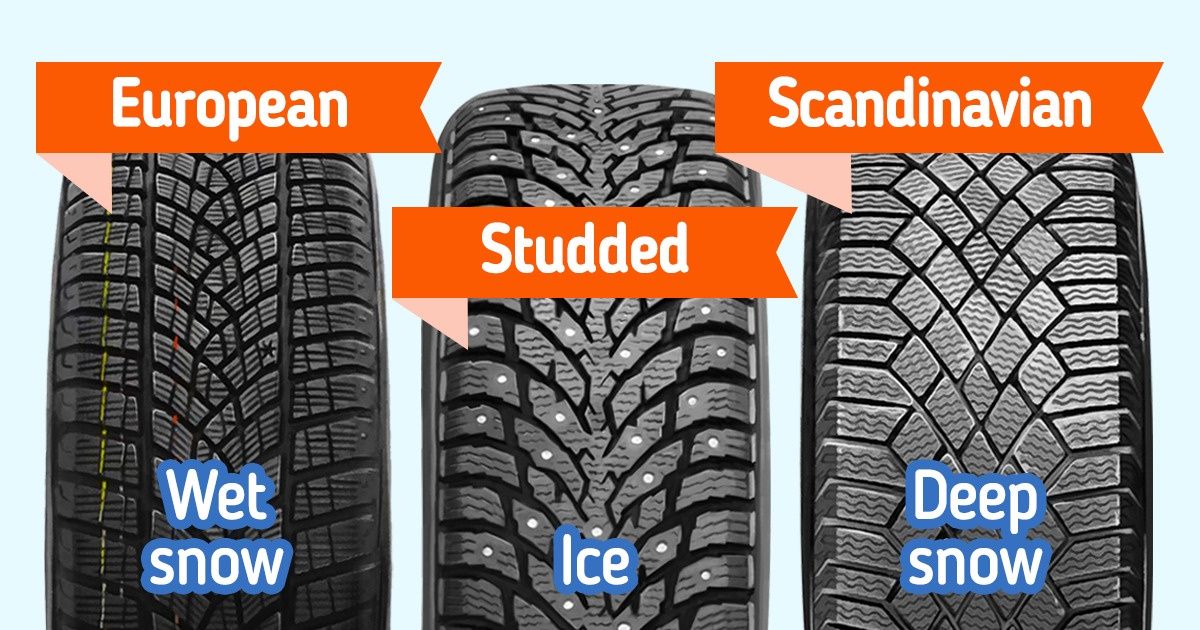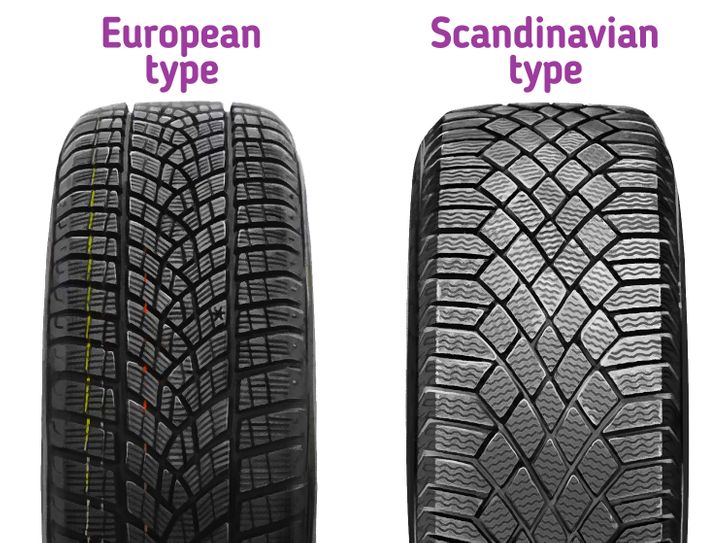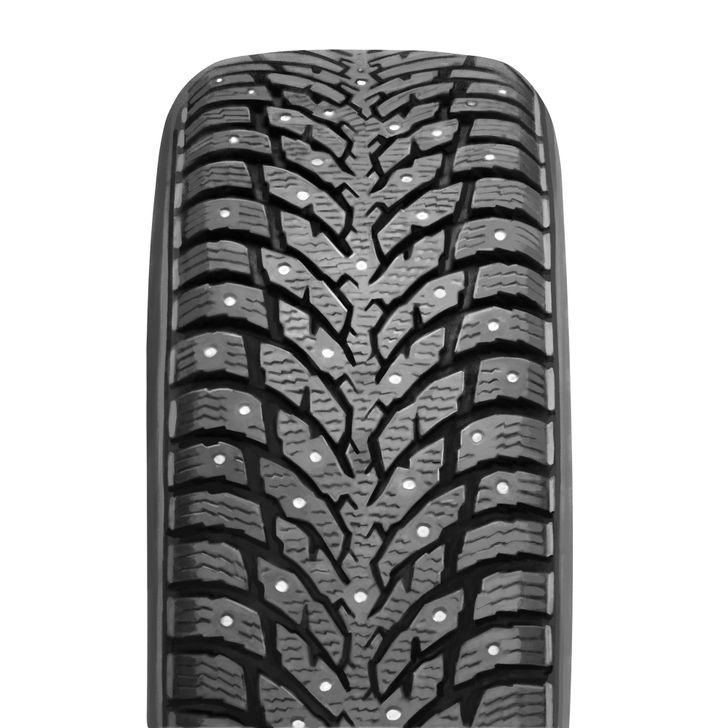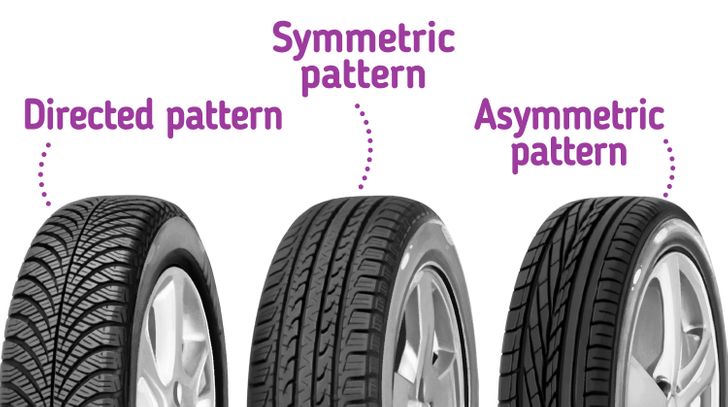How to Choose Winter Tires

With winter coming and the temperature dropping, most car drivers are rushing to change the tires on their cars. But how do you make sure you’re making the right choice?
5-Minute Crafts is going to tell you what to pay attention to when buying winter tires.
Guide to different winter tires
There are studded and non-studded tires. The non-studded can be 2 different kinds — European and Scandinavian.
The European type are good for winters with rain and wet snow, the protector pattern looks like a fir tree. The Scandinavian type that is better for deep snow has a diamond-shaped pattern.
Studded tires have small studs or spikes on them that might be made in different shapes and from different materials, depending on the manufacturer.
Studless winter tires

These tires have a directed pattern on them with deep treads that don’t get stuck with snow, which enables good braking on any type of road.
European-type tires are made of soft and flexible rubber. They have clear drainage treads that make them effective on wet and dirty roads.
Scandinavian tires have a narrow protector pattern that prevents the snow from getting in. They are good for snowy and dirty roads.
Pros:
- Okay with high humidity, salt, and other reagents.
- Good for snow and wet roads.
- Variety of models for different wheel types.
- They don’t damage the road.
- They save fuel.
Cons:
Studded winter tires

Studded tires are the best option for harsh winters. The studs on the tire make the grip better and improve the control of the car on snow or ice. During braking, the studs cut into the ice.
If you drive on snowy or icy roads, this is the best option. Don’t use these tires on clear roads. The studs will fall off and the tires will lose their effectiveness fast.
Pros:
- Good for driving on snow and ice.
- Good when you have to drive on a road that hasn’t been cleaned yet.
Cons:
- Lose their effectiveness fast when used on a clean road.
- Cars use more fuel with these tires.
- Make a lot of noise.
How to choose winter tires
1. When choosing tires, consider the recommendations of your car’s manufacturer. Buy the tires that are right for your car’s wheels.
2. Keep in mind the conditions you will use the tires on. If you are going to drive on clean roads at moderate temperatures, choose European, non-studded tires. If you are going to drive on really icy roads, studded tires are your best choice.
3. Pay attention to the “age” of the tires. They shouldn’t be more than 2-3 years old.
4. Buy RunFlat tires.
5. Studded tires should have a symmetric or directed pattern.

6. When choosing the pattern, consider the conditions you will use the tires on. Asymmetric patterns are great on clear roads, symmetric patterns are better for snow, and directed is better for mud and lots of snow with dirt.
7. Make sure that good tires can’t be cheap. Remember that the safety of the driver and the passengers is the most important thing.